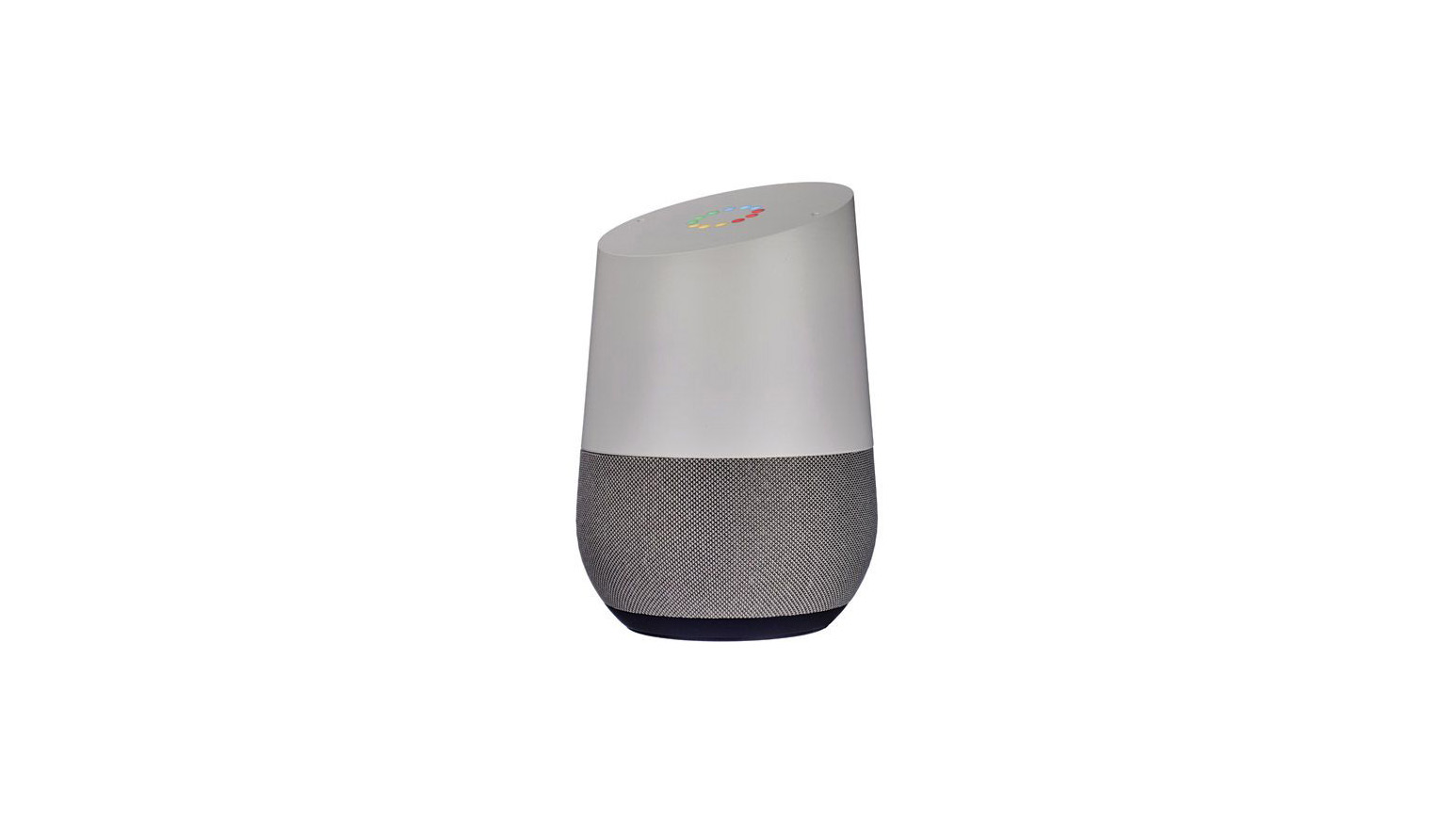What Hi-Fi? Verdict
Google arrived late to the voice-controlled assistant party, and has some catching up to do
Pros
- +
Simple to use
- +
Works with Chromecast
- +
Multi-room capability
- +
Stereo pairing
Cons
- -
Average sound
- -
Limited smart home capability
Why you can trust What Hi-Fi?
There’s a fight on for control of your home: in one corner of the ring is Amazon’s Alexa, already installed in the Echo and Echo Dot devices which have sold by the bucket-load. In the opposite corner is the Google Assistant, now found in Google Home and the Google Home Mini.
The best Alexa speakers and Google devices make a similar promise: to connect with multiple apps (or ‘skills’ as Amazon calls them), bringing voice control to your home entertainment and online search, plus a range of home automation devices such as lighting and heating.
Amazon has had a head start, with around 1000 companies announcing Alexa integration into numerous devices, starting back in 2018. Now Google has arrived, and is playing catch-up.
Build

Google Home is smaller than the taller, cylindrical Amazon Echo, and looks a bit like a large white air freshener. It’s a minimalist design, with a touch-sensitive circle on the top for adjusting volume and pausing/playing music.
There are also a series of coloured lights that illuminate when the device is active, and a mute button if you want to turn the two microphones off. To personalise the device, you can add one of the optional coloured bases, either fabric or metal.
The Google Home launch didn't quite go to plan, with the company hitting headlines when Burger King ran a TV advertisement that caused any Google Home speaker in the vicinity of the TV to read out the Wikipedia entry for a Whopper by asking “OK Google, what is the Whopper burger?” But with that behind it, the Google Assistant is now arguably the best-performing voice assistant on the market.
Features
Set-up is straightforward: just plug in, download the Google Home app to your iOS or Android device and follow the simple instructions to connect Google Home to your wi-fi network. It won’t take you long.
The latest hi-fi, home cinema and tech news, reviews, buying advice and deals, direct to your inbox.
Then it’s just a matter of connecting to your Google account and adding any compatible smart devices such as Nest thermostats or Philips Hue lights.
There’s support for Samsung SmartThings, IFTTT (If That Then This) and Wemo devices too. You can also link Google Home to Spotify, TuneIn Radio, BBC iPlayer, Google Play Music, Deezer, 7Digital Music and Musixmatch.
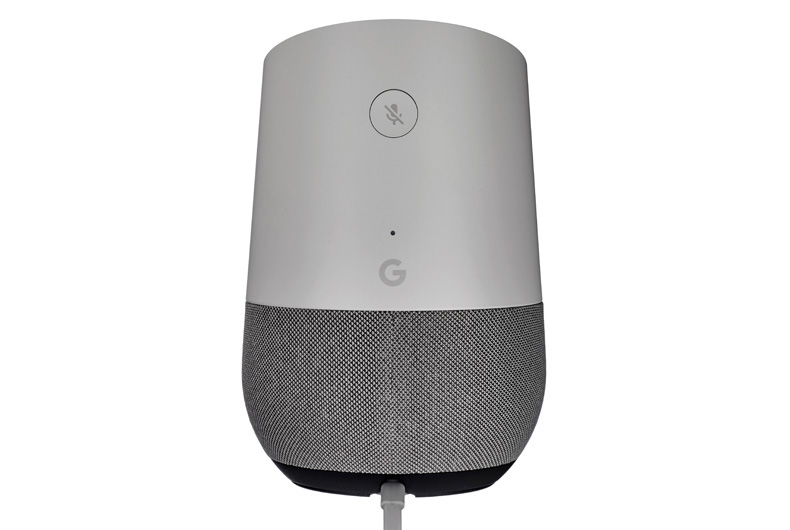
Google has upgraded its music streaming deal, no longer simply offering a free trial but instead offering free access to YouTube Music via the Google Home. Not a bad deal.
The ‘wake’ phrase is either ‘Hey Google’ or ‘OK Google’, neither of which sounds quite as natural as just saying ‘Alexa’. We prefer the sound of Alexa’s voice to that of Google Home which sounds a bit mechanical.
Google Home has done a good job of updating the number of compatible apps, adding brands such as Onkyo and Pioneer, and the likes of Hive and Uber, but there are still some gaps, especially outside the US. In the UK, National Rail Enquiries and EDF Energy, for example, which work with Alexa, are absent here.
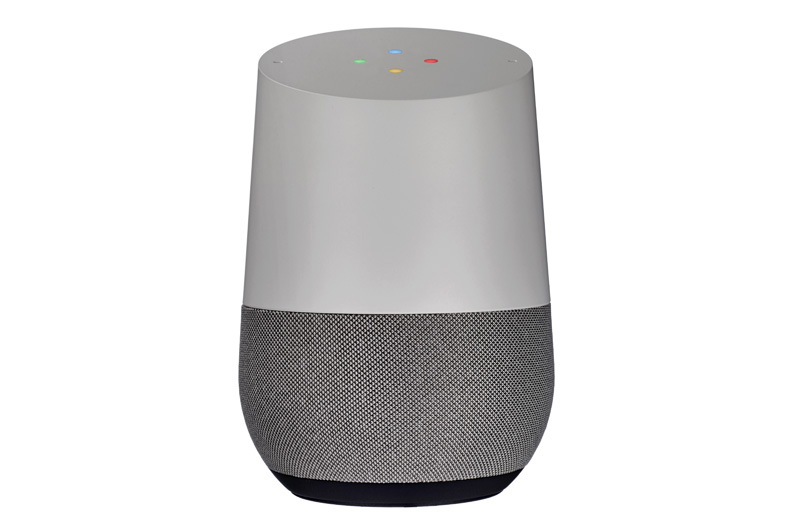
Where Google Home scores over the Amazon Echo is in its compatibility with Google Chromecast devices, both audio and video. This gives voice control of Chromecast-equipped audio systems, and also allows use of voice commands to Chromecast from YouTube and Netflix to your TV.
We add a Chromecast Ultra to our Samsung TV, and Google Home has no trouble connecting with it and following our commands to cast YouTube videos directly to the TV from an iPad.
Asked to play a random video from YouTube, we are amused to see it immediately chose a showdown between Google Home and Amazon Echo. If you have a Netflix subscription you can, say, ask Google to search for The Crown and start playing that – although you can’t command it to play a specific episode.
You can also stream music directly from your phone or tablet to the Home using Chromecast-compatible apps, of which there are plenty. Spotify Connect is part of the package.

One other advantage Google Home had over the Echo was in its multi-room capability – but this is now available with Alexa devices, too. Still, you can link two Homes together in a room to make a stereo pair, or link multiple Home devices together around the house so they can all play the same music simultaneously.
Our one caveat with Google Home’s multi-room proposition (and when pairing speakers for stereo playback) is, while it’s easy to combine them, using voice control to activate them pushes them out of sync. Grouping seems to work effectively only if you chose the correct pairing (or rooms) through the relevant app.
Google Home has now added Bluetooth capability, too, allowing for simple music streaming.
Connecting Home to our Philips Hue lighting system is straightforward. Go to ‘Home control’ in the Google app menu, then ‘devices’ and click on ‘add your smart devices’.
Once it has found your Philips Hue hub (you need to press the button on the hub to complete the connection) it will then ask you to assign specific lights to specific rooms so you can ask Google Home to turn on, say, just the lights in the kitchen or living room.
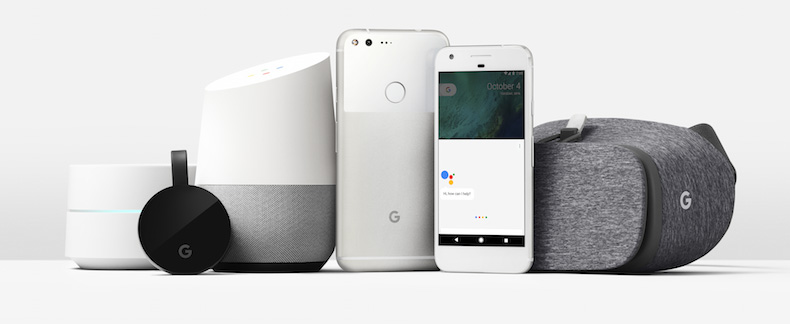
But outside your four walls, the Google Home links you to the entire world of Google search, and this is where it comes into its own. You can ask it anything and it will tap into the vast resources of search, maps, translation and so on to provide the answer.
In the UK and want the latest news from the BBC, The Guardian or Daily Telegraph? No problem. The Telegraph has even launched a dedicated audio show, '5 by 5', specifically for Google Home. The daily ten-minute news show features five of its journalists discussing five hot topics of the day and is broadcast at 5pm.
Ask Google Home about the weather, traffic, sports or to set an alarm, and it will duly oblige. You can even check your Google Calendar, including business accounts, a feature missing at launch. You can make voice calls, too.
The Home doesn’t integrate with Google’s other services such as Gmail, Google Docs and Google Voice. It can’t read out your latest emails for example, nor can you dictate a message, which seems a missed opportunity.
Still, if you want a recipe for a cake, need to know where the nearest petrol station is or even want Google to tell you a joke, it will duly oblige. We set Spotify as our default music service and voice searches for a variety of artists and albums prove to be no problem.
Sound
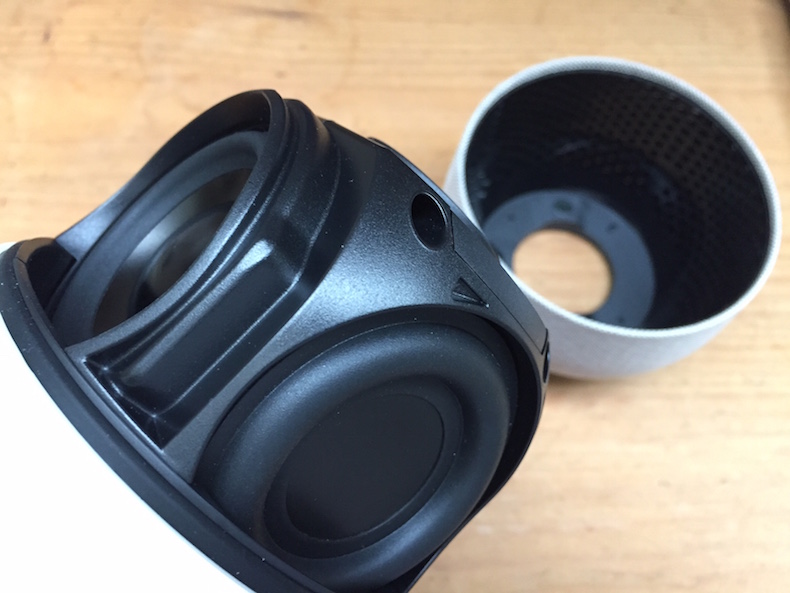
Google says the Home “delivers crystal-clear highs and rich bass for hi-fi sound that streams over wi-fi”, but we’d take that claim with a pinch of salt.
This is not a hi-fi speaker in the traditional sense and, given its compact dimensions, it would be unrealistic to expect too much.
Inside the base of the unit is a 5cm speaker and a pair of 5cm passive radiators. There’s support for multiple audio formats, including AAC, MP3, Vorbis, WAV (LPCM), FLAC and Opus.
Playing Radio 2 on TuneIn dialogue is clear, and songs are delivered with a reasonable amount of energy, but don’t expect thunderous bass or room-filling volume.
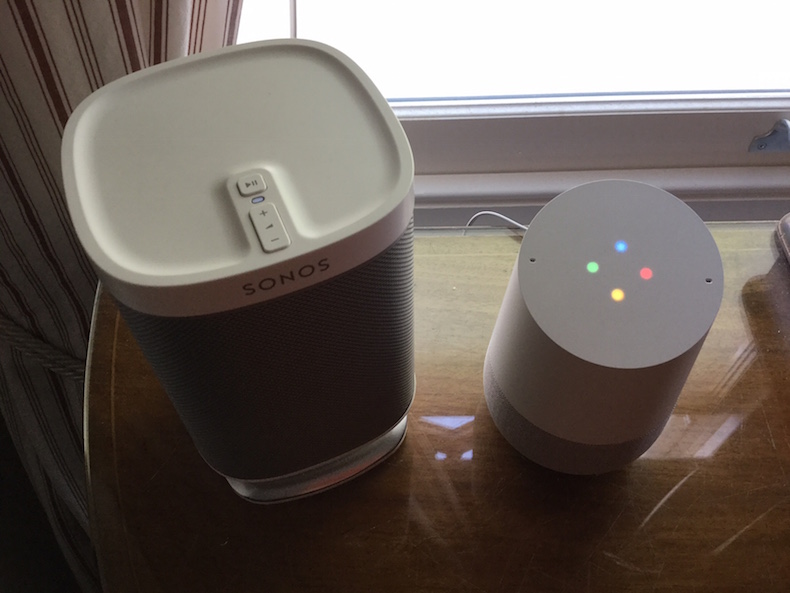
Switch to Maybe by Emeli Sandé on Spotify and there’s a thin, bright edge to the treble and a disappointing woolliness to the bass. Don’t expect a huge amount in terms of detail, definition or dynamics.
We test Google Home against a Sonos Play:1, and while the latter is more expensive it has more depth and authority to its sound.
We try the cheap UE Roll Bluetooth speaker for a more realistic price comparison, and sonically that has the edge too, with a sweeter, less strident sound than the Home.
For background listening Google Home is fine, and you can at least combine two of them for proper stereo, but music replay isn’t really its primary forté.
Given how small and lightweight it is, its performance is reasonable but nothing special.
Verdict
You probably shouldn’t buy Google Home as your primary music system, but fortunately there’s much more to it than that.
If you want a basic plug ’n’ play voice control assistant which takes charge of your smart home and doubles as a simple, affordable multi-room audio and video system, then it has its place – even if we think Amazon Alexa devices still have the edge for now.
- What is Google Stadia? The price, games, release date and more
- Google Home Mini review
- Google Pixel 3a review
- Google Pixel 3a XL review
- Google Play Music review
What Hi-Fi?, founded in 1976, is the world's leading independent guide to buying and owning hi-fi and home entertainment products. Our comprehensive tests help you buy the very best for your money, with our advice sections giving you step-by-step information on how to get even more from your music and movies. Everything is tested by our dedicated team of in-house reviewers in our custom-built test rooms in London, Reading and Bath. Our coveted five-star rating and Awards are recognised all over the world as the ultimate seal of approval, so you can buy with absolute confidence.
